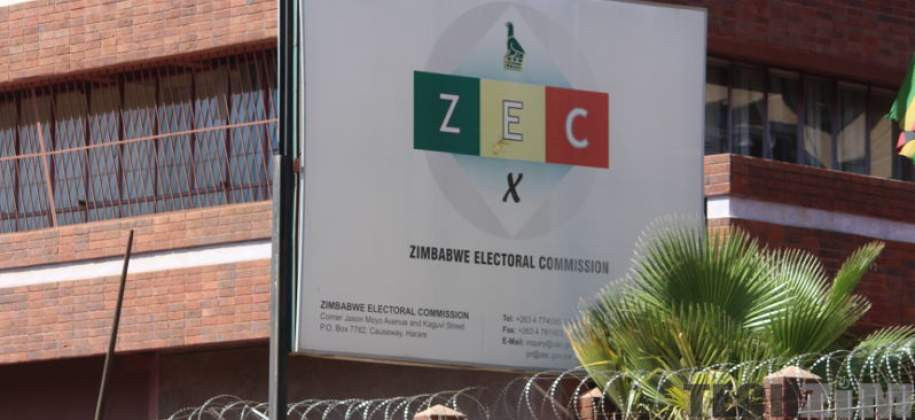
HISTORICALLY people with disabilities have been excluded from accessing formal financial services due to high levels of unemployment, poverty and lack of information.
People with disabilities are more likely to have lower income and experience barriers accessing formal employment, making it harder to meet the minimum requirements associated with financial services.
There are several barriers that hinder access to financial services and systems by people with disabilities and these include, physical accessibility of financial institutions, banking facilities and automated machines.
While several banking facilities are automating most of their services, there is need to ensure accessibility of such services considering the different impairments.
People with cognitive, hearing or visual impairments often struggle to access digital banking platforms, applications and websites.
In some cases, services and products do not cater for the needs of people with disabilities, for example insurance policies might overlook the risks associated with disability.
People with disabilities face challenges accessing credit due to the perceived higher risk by financial institutions that have led to the denial of loans.
The discrimination and bias experienced by people with disabilities in financial institutions has hindered equitable access to financial opportunities.
- Nedbank throws weight behind financial literacy
- ‘Zim making progress in formalising economy’
- Banks sign up 1,2m accounts
- Financial inclusion for people with disabilities
Keep Reading
Financial service providers lack awareness and understanding of the diverse needs of people with disabilities leading to inadequate support and service provision.
The documentation to be completed in accessing financial services is complex and inaccessible particularly for those with cognitive disabilities and literacy challenges.
The high cost of assistive technology needed to access financial services has been a major hinderance and information about financial products and services has not been provided in accessible formats, such as braille, easy read or sign language.
Most people with disabilities face digital exclusion.
They also have limited access to information and digital services.
Financial inclusion ensures that people with disabilities have equal access to financial services, which is important for their independence, economic stability and overall well-being.
It enables them to participate fully in society, facilitating for them to save, invest and manage their finances, reducing their reliance on others.
Through access to financial services, such as banking and insurance, people with disabilities can manage their daily living expenses and facilitate access to other services, such as health, education and technology, which enhances their daily living.
The Zimbabwe National Disability Policy emphasises the importance of taking effective measures that eliminate practices that restrict or deny people with disabilities control of their own financial affairs but enable and ensure equal access to bank loans and other financial credit.
The conditions for providing financing must consider the fact that people with disabilities are generally poor and may not have the assets to provide collateral.
Furthermore, disability must be mainstreamed in micro- finance facilities and services, thereby encouraging people with disabilities and their families to engage in various investment programmes.
Financial inclusion helps to break the disability poverty cycle through the provision of resources that build their financial resilience.
Financial inclusion promotes social inclusion, ensuring that people with disabilities are not excluded from financial systems and services.
The Reserve Bank of Zimbabwe, National Financial Inclusion Strategy (NFS2, 2022-2026) emphasises the need to address the barriers and challenges that people with disabilities and other marginalised groups face in accessing financial services.
The National Financial Inclusion Strategy has embraced the definition of disability as outlined in the Convention on the Rights of Persons with Disabilities (CRPD). Therefore, access to financial services is a fundamental right for people with disabilities and will support them in realising their potential and autonomy.
The strategy highlights the barriers faced by people with disabilities as follows: lower digital financial literacy, lack of trust in formal financial institutions, lack of requisite collateral, geographical distance from service providers, unfair market prices, and perceived risk by financial institutions, discriminatory norms and policies that lead to stigma, among other barriers.
To mitigate these barriers, several strategies that promote financial inclusion among people with disabilities are proposed.
People with disabilities need to access a range of financial services and products to cater for their diverse needs.
Therefore, efforts made to promote financial inclusion should take into account the social, economic and cultural factors that lead to financial exclusion.
A public and private collaboration is imperative in facilitating financial inclusion through the provision of supportive and accessible infrastructure.
Financial institutions must be fully accessible, and this can be achieved through installation of ramps, providing accessible parking and facilitating low-height counters that accommodate wheelchair users among other adaptations.
Digital banking platforms, websites and applications should be made accessible to people with disabilities in line with content accessibility guidelines, which may include features, such as simple navigation, screen readers or voice commands.
Financial products should meet the needs of people with disabilities and can be tailor-made to consider their income patterns and potential risks, for example customised stationery.
Assistive technology plays a major role in providing financial services to people with disabilities and this may include artificial intelligence and chatbots to bridge the communication and information gap.
Financial institutions should make an effort to collect disaggregated data by age, gender and type of disability.
Collecting such data will guide the planning and design of financial inclusion interventions relevant to the needs of the population.
Financial literacy programmes are essential as they help to build the capacity of people with disabilities on financial skills. Financial education should be provided in accessible formats and financial institutions should provide training for their staff on disability inclusion to enhance their understanding on specific needs and how to communicate effectively.
On the other hand, people with disabilities should provide feedback to financial institutions and share experiences on financial services and products.
It is important to involve people with disabilities in the development, implementation and monitoring of the financial inclusion strategies to ensure the specific needs are identified and addressed, to increase uptake and usability of services, foster innovation and to promote equal opportunities.
By taking these actions, people with disabilities will access services and take an active role in shaping an inclusive financial system that supports their needs.
Financial inclusion is a key driver for attaining the sustainable development goals because it directly supports poverty reduction, economic growth and social equity.
- Tigere is a development practitioner and writes in her personal capacity. These weekly New Horizon articles, published in the Zimbabwe Independent, are coordinated by Lovemore Kadenge, an independent consultant, managing consultant of Zawale Consultants (Pvt) Ltd, past president of the Zimbabwe Economics Society and past president of the Chartered Governance & Accountancy Institute in Zimbabwe. — [email protected] or +263 772 382 852.











